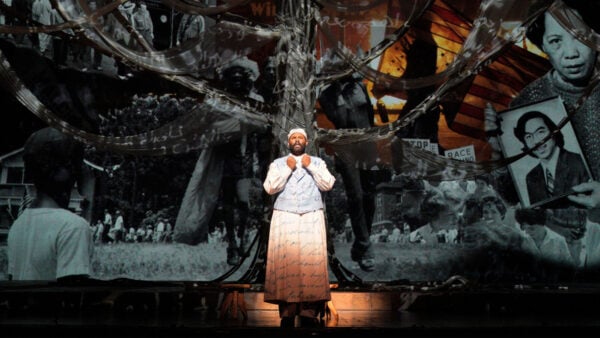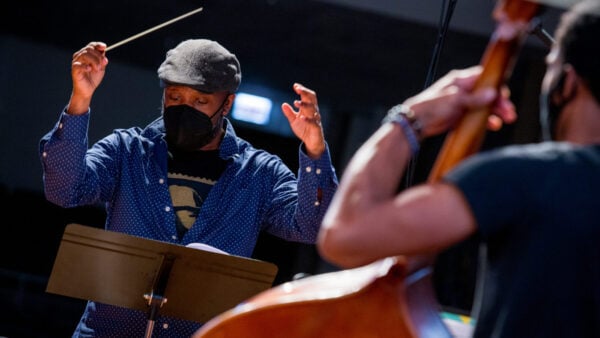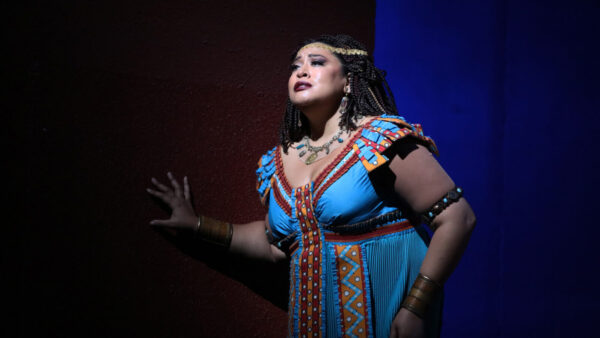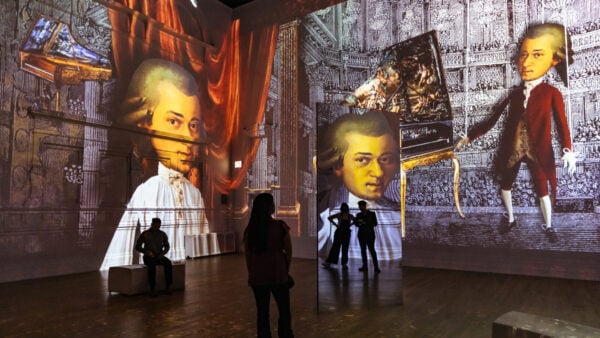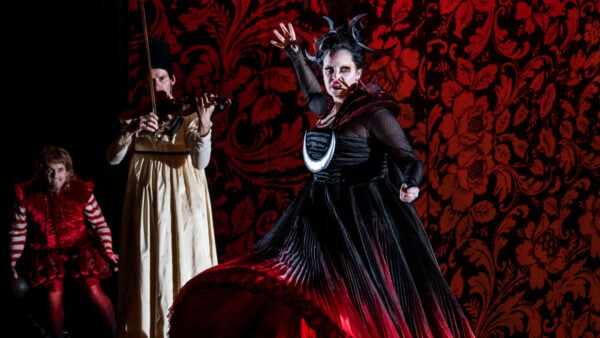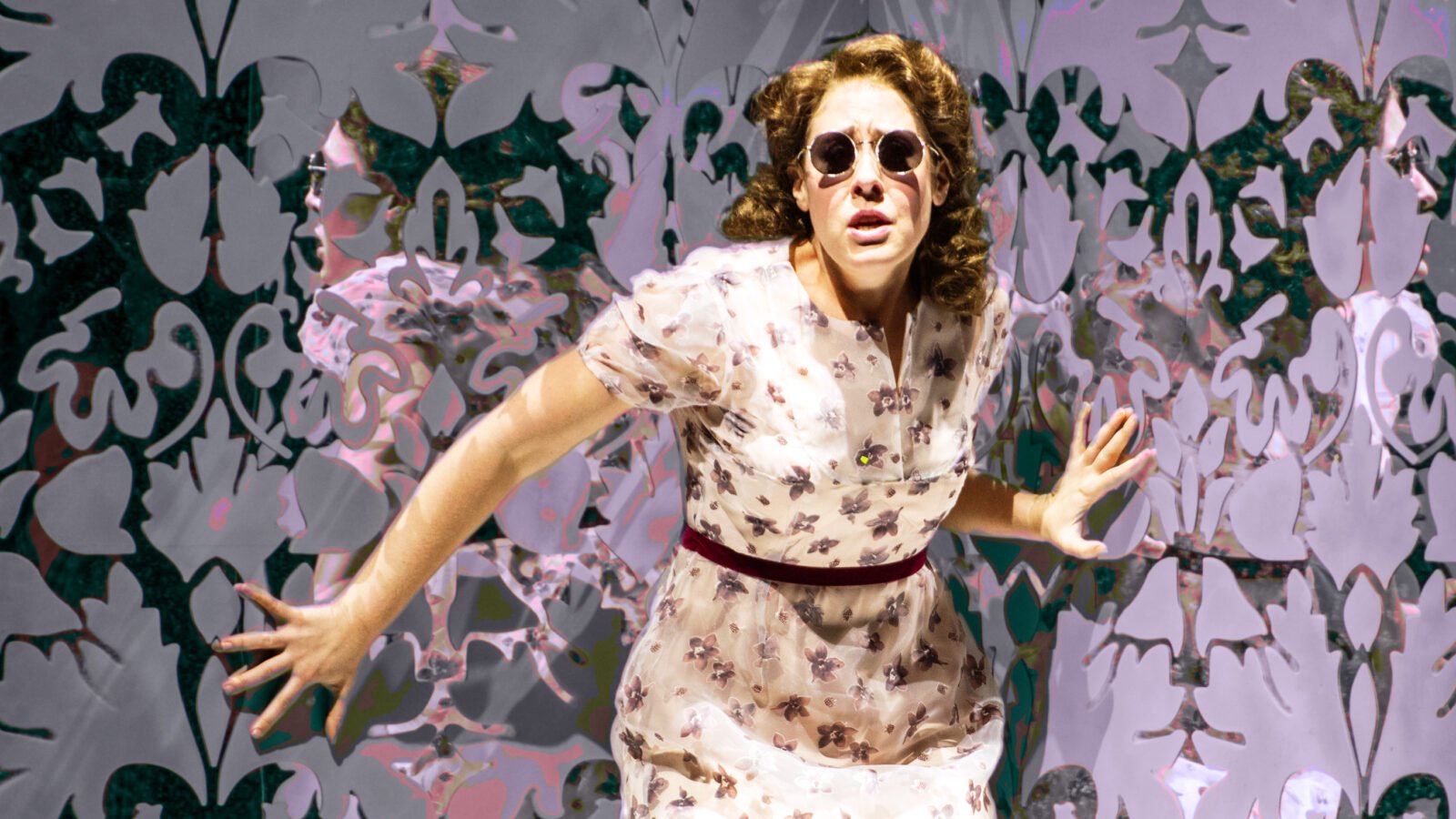
Katherine Weber in Chicago Opera Theater's Iolanta (Photo: Michael Brosilow)
It’s no secret that operas skew towards the dramatic. Plots are usually messy; love is complicated; characters burst into song with their dying breath. Even opera performances are usually extravagant affairs, from powerful vocal techniques, to colorful costumes, huge sets, and exaggerated movements intended to be seen from the back of an opera house. Yet despite its general reputation for high drama, there exists a surprising number of goofy and downright weird works for opera as well.
Deep within the repertoire, one can find many ridiculous stories set to songs over opera’s 400-year history. Take out the high courts and bring in the dancing elephants: here are some of the strangest opera plots that have ever been put to paper.
1. Aniara
Composer: Karl-Birger Blomdahl
Premiere: Swedish Royal Opera Stockholm, 1959
Aniara by Karl-Birger Blomdahl is quite literally a space opera. In some unspecified future time, the spaceship Aniara is on its way to Mars, carrying refugees from Earth’s nuclear fallout. When the ship is thrown off-course, the crew must find a way to live with the knowledge that they may never reach their destination alive. They deal with this knowledge in a plethora of strange ways: there’s a cult to Light, a communal dance, and a body shot into space.
The opera also has a couple of strange performance quirks. First, one of the main characters of the opera (the pilot Isagel) doesn’t have a singing role. He is solely able to express his character through dance. There is also the character of Mima, the ship’s computer, who is “played” by an electronic tape machine.
With its combination of jazz, serialism, and electro-acoustic sounds, this work is worth an exploration — especially for fans of the final frontier.
To learn about the music from Aniara, visit bonnierskonsthall.se.
2. L'enfant et les sortilèges
Composer: Maurice Ravel
Premiere: Opéra de Monte-Carlo, Monaco, 1925
Maurice Ravel's whimsical opera (in English, The Child and the Spells) tells a pretty straightforward tale: a child throws a tantrum, and learns that he shouldn’t. But the journey to get to that realization looks similar to Toy Story… if those toys united to give Andy a piece of their mind.
The story opens with a child throwing a tantrum after being scolded by his mother. He takes it out on the objects in his room. Fed up with the child’s cruelty, the objects rise up in revolt. Furniture berates him; animals sing of their pain; even his homework transforms into a chorus!
The child must learn compassion and try to mend his ways. This fantastical journey, brought to life by Colette's witty libretto and Ravel's enchanting score, explores themes of childhood and the transformative power of empathy. Yet be warned: there are some excerpts that are definitely less innocent than others...
Watch the full opera here
3. Iolanta
Composer: Pyotr Ilyich Tchaikovsky Premiere: Mariinsky Theatre, Saint Petersburg, Russia, 1892Whether from a dungeon, a dragon, or a tower, many are the stories about a prince who needs to save a princess. But what happens when the confinement is mental instead of physical? Based on a Danish play, Tchaikovsky’s Russian-language Iolanta follows the story of a blind princess who lives in a beautiful enclosed garden. She doesn’t know what blindness is, nor does she know that she is in fact a princess. Both of these facts are concealed from her by her father, who worries about dangers she might encounter. Betrothed to someone who doesn’t love her, and forbidden from the man who does, Iolanta slowly learns about love and her own identity… but what will she choose when the possibility of a cure is finally revealed?
Though not as well loved as some of Tchaikovsky’s other scores, Iolanta is nonetheless a wonderful and strange journey, existing on the sweeter side of the opera spectrum.
Watch the full opera here
4. The Love for Three Oranges
Composer: Sergei Prokofiev Premiere: Auditorium Theater, Chicago, 1921How do you cure someone’s hypochondria? Isn't it obvious!? Look at a witch’s underwear!
This goofy opera by Sergei Prokofiev opens with a prince who must be cured of his ailment, and conflict among those who would see him cured and those who want to take his place. The group wishing to assassinate the Prince accidentally cures him when a member of their party, a witch, trips and exposes her underwear. In a rage, she counters his cure with a different curse: the prince will now be obsessed with a “love for three oranges.” The Prince and court jester Truffaldino immediately set off on a quest to find these oranges… but there are more to these oranges than meets the eye.
As fruits transform into women and characters wind up in absurd scenarios, figures representing the theater genres of tragedy, comedy, lyric drama, and farce watch from the sidelines with an occasional remark. Decide for yourself which of these genres The Love For Three Oranges fits best!
Watch the full opera here
5. Les mamelles de Tirésias
Composer: Francis Poulenc Premiere: Opéra-Comique, Paris, 1947Written during World War II, Francis Poulenc's Les mamelles de Tirésias (The Breasts of Tiresias) takes “Make love, not war” to a whole new level in this tongue-in-cheek farce.
Thérèse is an ambitious young woman who is tired of her life as an ordinary housewife. One day, she decides to let her husband know her true thoughts with an impassioned speech. Then a miracle happens: her breasts blow up like balloons and float off of her body. This new development delights Thérèse, who takes the opportunity to pursue her dreams of conquering the world.
The wife becomes the husband, the husband becomes the wife, and chaotic hilarity ensues as personal dreams clash with social expectations placed upon married couples. The key takeaway from this opera? Love is always better than war. Even if it sometimes takes 40,049 children to get there.
Watch the full opera here
6. The Nose
Composer: Dmitri Shostakovich Premiere: Maly Operny Theatre, Leningrad, USSR, 1930Even among strange operas, Dmitri Shostakovich’s debut opera definitely has a unique scent. The plot revolves around a nose that one day goes missing, specifically, that of a St. Petersburg government official. What’s more, the nose has grown to the size of a human, climbed to a higher ranking status than its owner, and is gallivanting around town.
This scathing political satire gains an element of human drama when the official (Kovalyov) suspects he has been cursed by a staff officer’s widow for refusing to marry her daughter.
Based on a short story by Nikolai Gogol, Shostakovich’s harsh yet fitting score adds a sardonic element to the overall absurdity of the situation.
Watch the full opera here
7. Platée
Composer: Jean-Philippe Rameau Premiere: Grande Écurie, Versailles, 1745Whether this tale is truly a comedy or a tragedy is up for interpretation! Jean-Philippe Rameau’s Platée references Roman mythology to tell the story of a god, Jupiter, trapped in a jealous marriage to his wife Juno. In order to ward off her jealousy, Jupiter hatches a plan to toy with the feelings of the water nymph Platée… an ugly frog convinced that everyone who enters her pond is in love with her. Cue the dancing animals, chorus of frogs, and even a fake wedding, as characters see just how far they can take this not-so-nice joke.
At the end of the play, when Platée sadly swims away, the audience is left wondering just how “comical” this opera truly was.
Watch the full opera here

